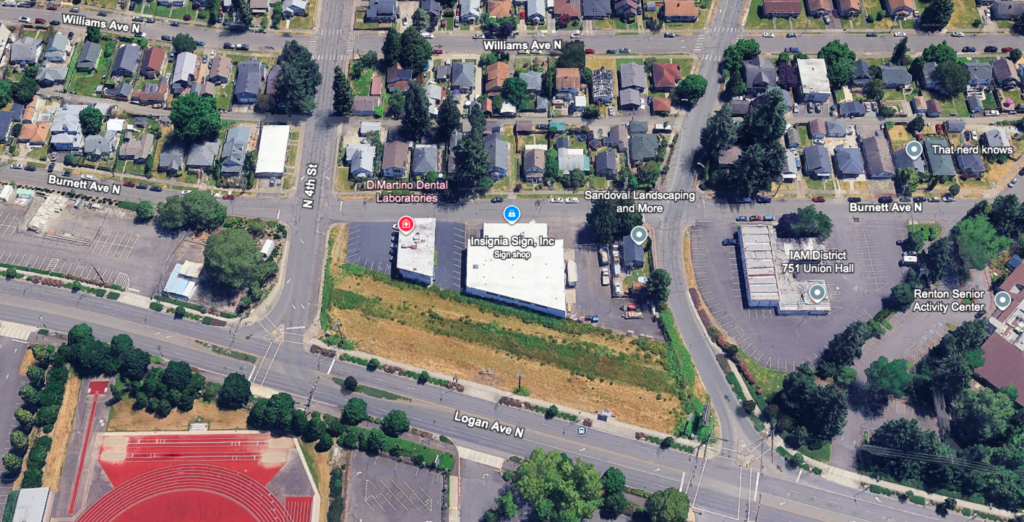
The grass field in the center lower-half is the site of the proposed Logan Six development. The site was a former railroad easement, that has utilities buried in it.
It’s rare in Renton for neighbors to actively picket a new property development, like North Renton residents have with the new Logan Six project. Even Renton’s Hearing Examiner has said “The proposal has drawn more opposition from neighbors than any project the City has seen in several years”. So what has made Logan Six so controversial, even while Renton has so many apartments going in with few complaints in many other areas?
The answer springs from new policy interpretations that are unmanaged and unchecked by Renton City Council. And because of new “Missing Middle” zoning that is currently in work, this failure on the part of Renton Council to provide needed oversight, if not corrected, will soon grow until we see similar protests city-wide.
From speaking with residents privately and watching their testimony at City Hall, it’s clear that the Logan Six controversy emerged from two problems, both of which are likely to become more prevalent in our city soon; the physical project was too big for its long-narrow site, and Renton Council went out of their way (even changing the law) so that they would not have to ever address the affected residents’ concerns.
PROBLEM NUMBER ONE: This development was too big for the property:
The long narrow strip of property is a former BNSF railroad easement, with City and Boeing utilities buried in it, including the critical water supply to the Boeing factory. The property historically derived a small income from being rented for Billboard Space. As recently as 2014 it appears it was sold for $42,000, about a fifth of what a single-family building lot would have sold for. To most planners the property looked like its long term use would be as a trail, or parking, or an eventual widening of Logan Avenue.
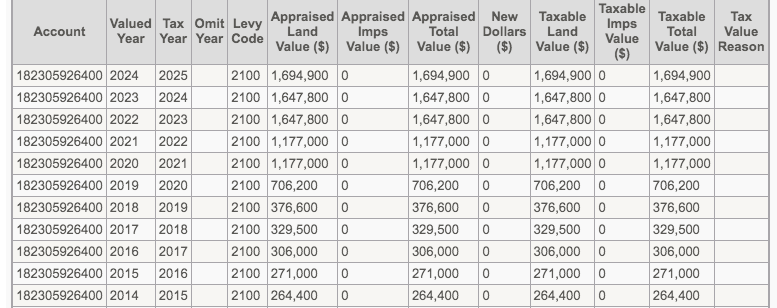
The tax assessor put the value at $284,000 ten years ago, about the same as the value of a single family lot. In recent years, as city approvals rolled in, the value has rapidly escalated.
In one of the developer’s first application letters, the developer identifies three times that the project would not be doable, or would not “pencil” if they were not given special allowances by the city regarding the street requirements, given the long-narrow nature of the property and the utility easements encumbering it.
The property is also abuting the century-old North Renton neighborhood, which has suffered so many previous traffic and noise impacts from nearby industrial and businesses through the decades that the Renton zoning code specifically requires project compatibility with this neighborhood. Unfortunately the Logan Six property fell just outside of this protection statement, most likely because it was not foreseen to be a site for a development of this type.
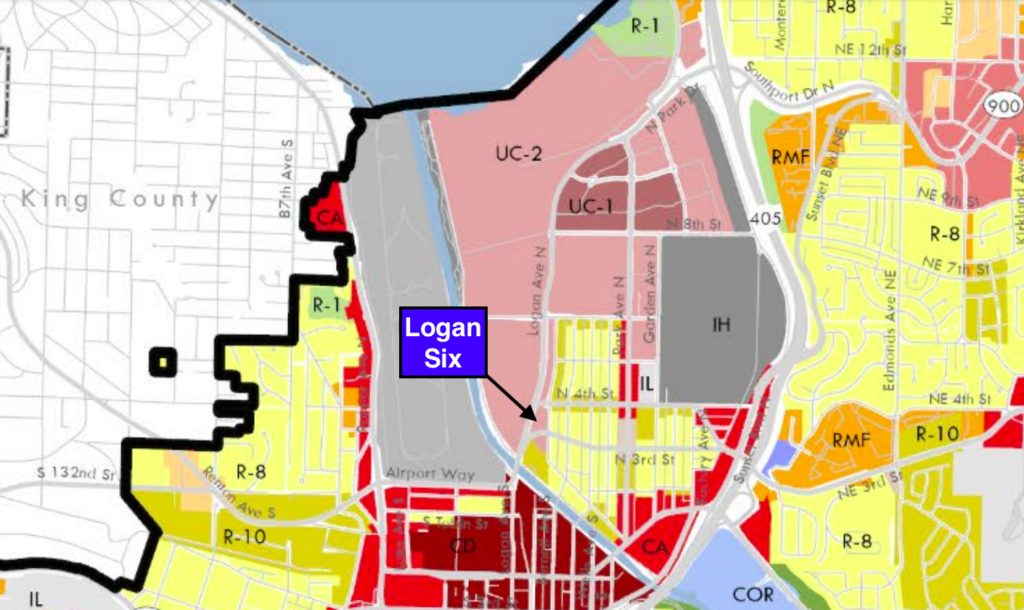
Logan Six is in the Urban Center 2 zone on Renton’s zoning map, and zoning language puts all Urban Center zones in “District C.”
Specifically, this project is in “District C” of a strip of the “Urban Center 2” zone, which carries the restriction “For properties along North 6th Street and Logan Avenue North (between North 4th Street and North 6th Street), applicants shall demonstrate how their project provides an appropriate transition to the long-established, existing residential neighborhood south of North 6th street known as the North Renton neighborhood.” If the above restriction had been extended one block south, covering North 3rd to North 6th on Logan, it would have required that Logan Six be compatible like other new developments in this area.
The Hearing Examiner noted the various interpretations and judgement calls that city staff had to make in balancing the conflicting comprehensive plan and zoning requirements. For example:
“As noted, the one part of the project that could make a difference is the access to the proposal. The proposed access is on N. 3rd and 4th Streets. Both streets serve as entrance points to a quiet residential neighborhood to the east. Project opponents would like to see that access on Logan Street, away from their neighborhood. Staff have provided detailed reasons why they have not found such alternative access workable due to conflicts with pedestrian design standards, site access standards and avoiding congestion on Logan Street. The proposal pits the comprehensive plan policies favoring the access
supported by staff verses the City policies cited by project opponents protecting residential character. There is room for argument on the merits of the City’s position.
City staff should have been more specific about what site access standards would be violated by Logan Street access. Ultimately, however, it must be recognized that planning staff have taken into consideration the impacts to the community as a whole in navigating the City’s congested major arterials verses the more localized interest of project opponents. The staff supported access points don’t actually extend into the adjoining neighborhood but likely will create some additional traffic into the adjoining
neighborhood. Minimizing access points to the City’s primary arterials and minimizing disruption to the City’s transit facilities is the best of hard choices that have to be made. Access as proposed is found most consistent with the City’s comprehensive plan policies.”
With all due respect to the Hearing Examiner’s office, I question whether they may have given too much weight to the “minimum density” figure, which is also subject to judgement calls, when balancing the comprehensive plan issues.
The city’s “density worksheet” requires developers to determine their “net acreage” after taking out streets, critical areas, and private access easements. The remaining property is then subject to a minimum density of 85 units per acre as well as maximum density of 150 units per net acre.
But this property has critical water lines buried in it, and Boeing has stated that per their easement, these lines should not be built upon, and require immediate access in the event of a failure. Their factory produces millions of dollars per hour of revenue which is at risk if they lose water and fire protection. This easement could have been interpreted as a private access easement, not suitable for development and taken out of the density worksheet. Or the property with the water lines perhaps should have been removed from the parcel with a boundary-line adjustment and sold to Boeing, lowering the minimum density. Council should clarify that no one can simply assert they have a supreme entitlement to build 97 units on a too-narrow strip of property, broken up with critical utility easements, requiring special street allowances, conflicting with other important elements of Renton’s comprehensive plan.
Here’s specifically what the hearing examiner said:
“The law is unquestionably clear that the applicant has the right to place at least 99 dwelling units on the subject property. RCW 36.70B.030(3), a state statute, provides that as to density, “..the local government or any subsequent reviewing body shall not reexamine alternatives to or hear appeals..” The City is prohibited from considering a lower density. There is no comparable state mandate for policies that protect residential character or design standards with subjective requirements regarding building mass and orientation. If the City were to require anything less than the minimum density required by the Renton Municipal Code The Applicant currently proposes 97 units. To meet minimum density standards the City testified at hearing that two more units will be required.”
And note that the Hearing Examiner says “There is no comparable state mandate for policies that protect residential character”, a Renton Council Member would only have to read the beginning of that same chapter of state law to find there IS a requirement for cities to protect character of established residential neighborhoods; it’s so important that it is in the very first sentence of the housing element section:
“RCW 36.70A.070
Comprehensive plans—Mandatory elements.
The comprehensive plan of a county or city that is required or chooses to plan under RCW 36.70A.040 shall consist of a map or maps, and descriptive text covering objectives, principles, and standards used to develop the comprehensive plan. … Each comprehensive plan shall include a plan, scheme, or design for each of the following:
(1) A land use element designating the proposed general distribution and general location and extent of the uses of land….
The land use element must give special consideration to achieving environmental justice in its goals and policies, including efforts to avoid creating or worsening environmental health disparities….
(2) A housing element ensuring the vitality and character of established residential neighborhoods that…
(a) Includes an inventory and analysis …
(b) Includes a statement of goals, policies, objectives…., (c) Identifies sufficient capacity of land for housing …(d)…(h)….etc”
PROBLEM NUMBER TWO: Renton City Council purposefully avoided all involvement, even changing the law to side-step the issues
A big part of the reason residents are protesting is the fact that they feel unheard by Renton City Council, and they have cause to feel this way. Renton Council members refused to discuss this project with any North Renton residents, even on the record, during the years that Renton staff was making its many determinations that would impact the North Renton neighborhood. They did this saying they would review the project upon Hearing Examiner appeal, and then on the night before the Hearing the Council changed its mind. They overturned a decades-old ordinance that sent these appeals to Council, and sent the neighborhood to King County Superior Court if they wanted any help.
Renton’s Planning staff and Hearing Examiners do an outstanding job and have a high workload, as they daily sort through an immense number of projects trying to discern legislative intent of the rules. But our planners and Hearing Examiners should not be expected to do this complicated work without City Council guidance, especially in the face of state laws that are rapidly being changed. Especially when these state law changes are coming from a spurious legislature that has been shown to disproportionate burden on some cities like Renton more than other cities, and to experiment with their lawmaking without adequate data or feedback (such as limiting police pursuits and then having to reinstate them after three years of skyrocketing auto-fatalities, car thefts, and other crimes.)
North Renton residents have found the appeal would cost them $30,000-$40,000 minimum, and they are discussing how they might gather such funds. But even if they can acquire the funds, since Renton Council has sidestepped involvement, it would be up to a County judge to try to determine Renton City Council intent. Something that Renton Council could have settled efficiently and explicitly, now has to be guessed at by judges and lawyers in Seattle.
Worse still, Council sidestepped these appeals for all future projects as well.
North Renton residents tell me that they believe Renton Council punted the appeal to avoid having to make difficult calls on challenging issues…in other words, do their jobs. Most residents I spoke with said they would have been okay with any outcome if they had felt that the Council had at least heard their concerns, acknowledged them, debated them, and then made a finding either for the residents or for the development. It was their unwillingness to engage that was so infuriating.
WHY THIS NOW MATTERS IN EVERY NEIGHBORHOOD
Renton Council is rapidly rezoning our whole city, to comply with the State Missing Middle Housing law. No one could make the number of decisions they need to make so quickly, without making mistakes along the way. There will be controversies that come out of this new zoning, and Renton Council Members should not exclude themselves from hearing the issues, ruling on appeals on the issues, and then making updates to the zoning code to correct errors.
The PLAN-DO-CHECK-ACT Cycle has been around for 100 years, and it is the way smart organizational leaders ensure they continually improve their products and services. Renton Council had the feedback built into our appeal process for decades. When planning department interpretations became so complex that applicants and residents would disagree on interpretations, the appeals would come to Renton City Council. Sometimes the Hearing Examiner might have erred, and sometimes not, but in either case the Renton City Council had direct feedback about a conflict, and could adjust the rules for future projects accordingly.
By removing themselves from appeals, City Council has said they no longer want to take responsibility for the “Check-Act” steps of this cycle, where they learn from their mistakes and make corrections to them.
So when the Missing Middle legislation starts negatively impacting all our neighborhoods, Council will not help clarify interpretations on appeal, and they will not learn directly of needed changes.
We’ll soon see protests in every neighborhood if the Council continues to refuse to engage.
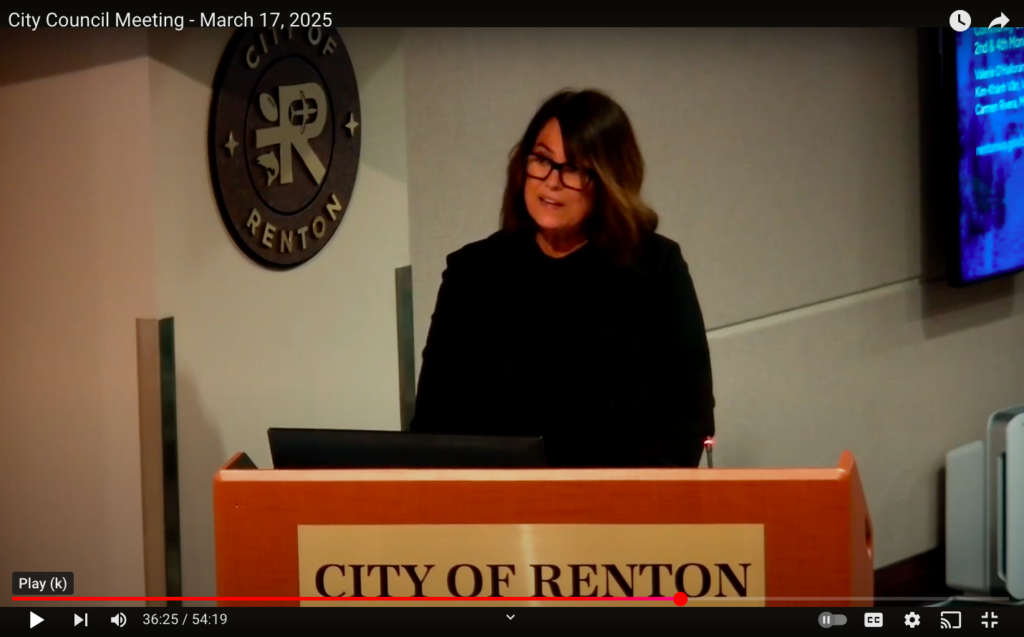
At Monday’s Council Meeting, North Renton resident Sheryl Friesz described some very serious concerns and said she doesn’t feel heard by the council.

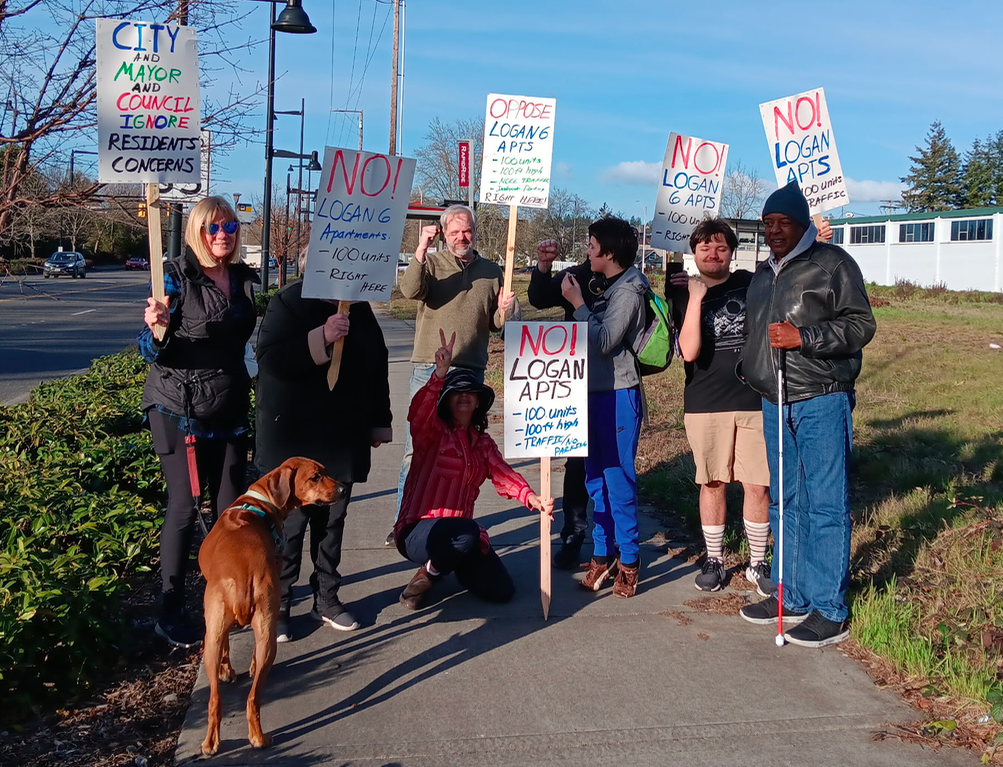

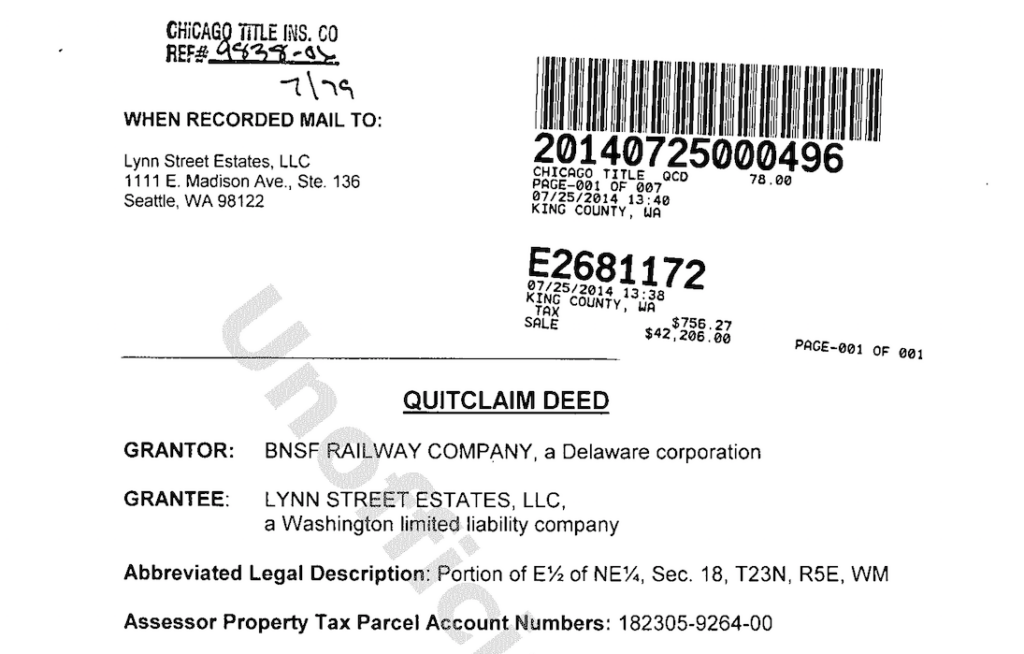
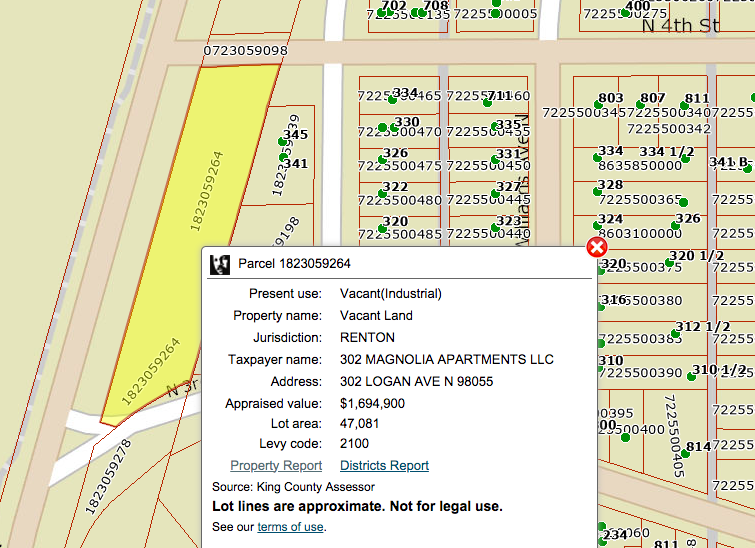
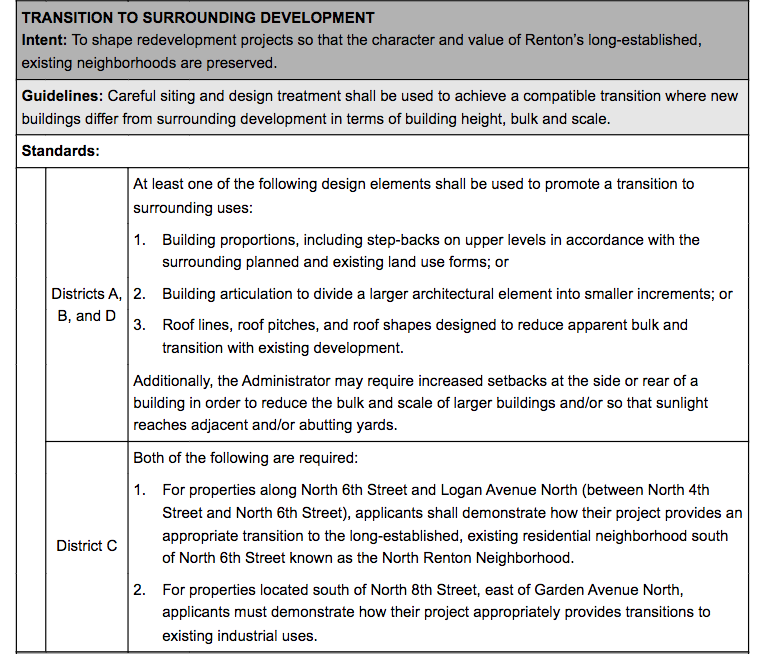
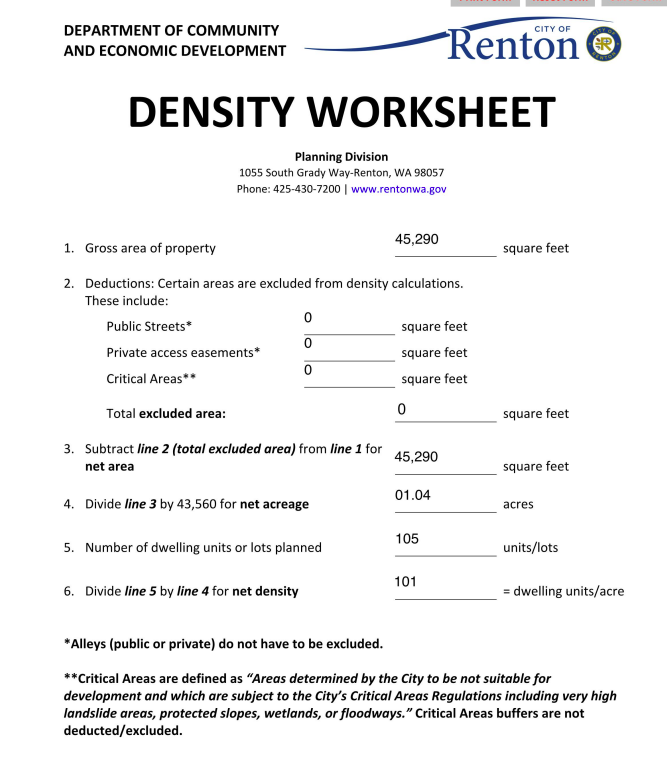

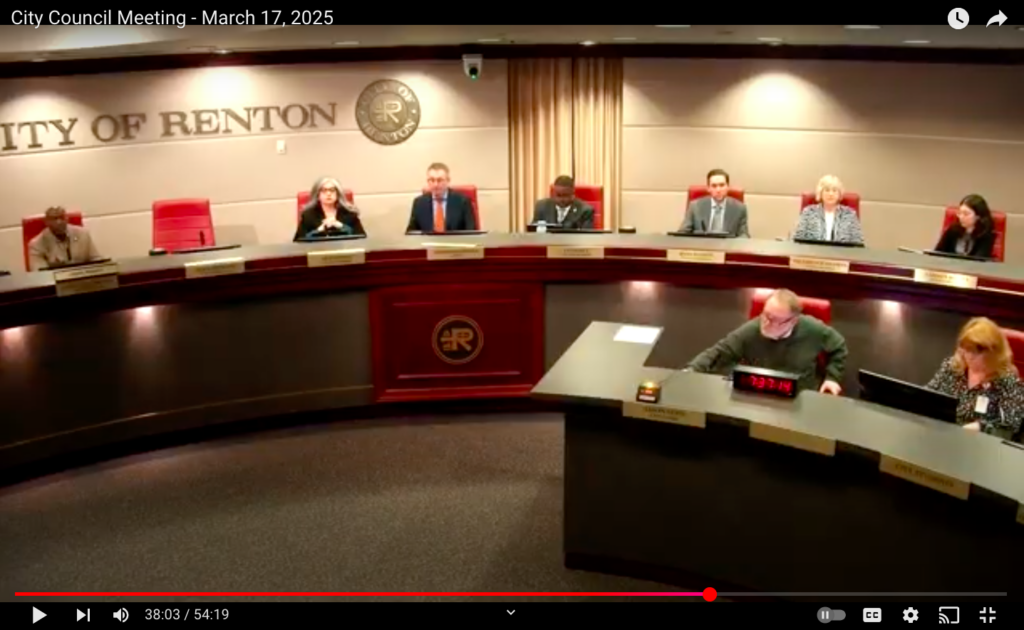

Another excellent article Randy, with deep analysis and facts. It’s hard to understand how our Council can week after week ignore Renton residents and believe they will be re-elected. 3 Council Members are up for re-election this year; we’ve heard 3 other council members are running for other positions (King County Council &/or Executive). So obviously their attention is not with Renton but their own political ambitions instead of taking care of what they’ve been elected to do. When the mayor spoke to the Kennydale Neighborhood Association last month, he made a snarky comment while talking about the “Missing Middle Housing” and said “I’ll be interested in seeing how Kennydale people deal with a 6-plex going in in your neighborhood.” This is going to be an ongoing issue for our city and it already appears our current electeds will not have any interest or empathy. Yes, it’s hard to watch our city going down the toilet under their watch. But but but…soccer is coming in 2026 so keep putting city resources on that.
Marcie Palmer
As a long time resident of the North Renton Neighborhood(1984). I watched the Council ignore our concerns regarding Logan6. I spoke at council meetings. I picketed on Logan. I sent emails. I left voicemails and still I feel UNSEEN.. My next step is to watch closely to see what this developer and the city have in store for the Burnett Ave N side of this block. I will act sooner and make my voice louder. Paying very close attention to which council members I will or will not support.
Regardless of the merits of the Logan 6 development or the merits of the ordinance change, the process Council has chosen was to use its authority to abdicate its responsibility to faithfully discharge the duties of their office and to the residents of Renton.